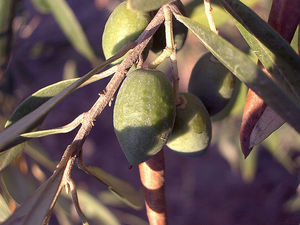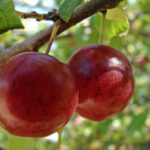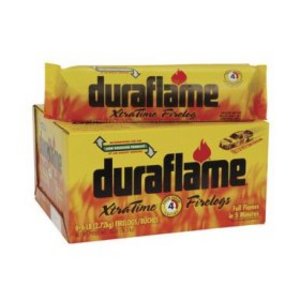2009/2010 was a horrible winter here in France. Even down in the south, in Provence, it was exceptionally cold and rainy. Light sunny days were few and far between and even my charming French neighbours were a little subdued, not in their usual high spirits. At the end of March it was finally mild enough to get out and start pruning the oliviers.
My neighbours were busy from morning until evening with hundreds of mature olive trees that required detailed attention.
My own oliviers are fewer – around two dozen – they’re all the verdale variety which is the ‘native’ olive tree of Provence. They’re a mix of young trees and trees which grew painstakingly from the ruins of trees killed by the long hard frost in the south of France in 1956. Millions of olive trees died in Provence that year because of the extended cold winter and hard frosts. I planted the new trees in 2006, exactly half a century after that disaster for French olive growers.
Younger and older olive trees need to be pruned differently. I have learnt what I know from my neighbours but have a lot still to learn and am a long way from being thoroughly competent.
For the more established and taller trees, I cut away the suckers from around the roots to favour the three or four main central branches, or charpentes, and then used secateurs to remove branches which were growing into the “middle” of each tree. Thinning and opening the olivier out in this way lets the lovely Provencal sun in – and olive trees love the sun. I also took off small branches bearing diseased leaves and any small dry twigs that were dead.
For the younger, smaller oliviers, the first thing to do was to stand back and look at each one. Then you circle it; again, just looking at this point. My (philosophical, French) neighbour laughed when I first had a go at pruning an olive tree a few years ago. “You dash in there and start looking for branches to cut without assessing the tree’s shape and charpentes.” he said. “Pruning an olive tree is not an emergency! So take your time. Stand back and look – and think – before you act.”
Once you’ve taken in the shape and assessed the overall balance of the young tree, you then look into the middle and make a decision about removing charpentes, cutting at the centre where they begin to branch out. The aim is to leave three or four sturdy, well balanced charpentes as these will forever form the tree’s basic structure.
You then remove any branches which are trailing on or too near the ground and branches which cross over others in the centre of the tree.
Brush and weeds need to be cleared away from round the base of each olivier. I leave the wild asparagus that grows though because it grows particularly well near the olive trees and produces beautiful slim asparagus spears each March and April. The space cleared round the tree can be as wide or even a little wider than a young tree.
A little later in spring, I’ll put down a mixture of horse manure and straw to add nutrients to the soil. This comes from a friend of a friend who has several horses and is glad to be rid of the manure. It’s entirely natural, without any of the peculiar industrial chemicals that are poured into commercial fertilisers. The horses are beautiful, with bright eyes, good tempers and glossy coats. They graze on untreated grass without crops nearby. That means that there are no chemicals being sprayed near them. The animals aren’t treated with antibiotics either. And as I don’t treat the trees with chemicals it means that the olives and subsequent olive oil are very pure and simple – totally non-traitéé.
The last task when pruning olive trees is to make a heap of all the pruned branches and burn them. That requires great caution and careful timing in this forested area. The (eternally handsome) local firemen – the pompiers – quite rightly enforce the times when there can be no fires lit here. Even on a slightly breezy day it’s not worth taking any risk.
After that, the oliviers need 40 litres of water each – only every two weeks thankfully. That’s accomplished either by lugging an extended hose up to the terrain, or by nature – spectacular Provencal summer thunderstorms have a habit of coming along, thankfully, just as the trees start to look a bit crisp and parched. The clouds bulk up overhead, a crack of thunder’s heard, the first hesitant drops fall and then the skies open up… All to the benefit of the beautiful olive trees, the eventual winter harvest of olives and the velvety olive oil which will be bottled at Christmas.





